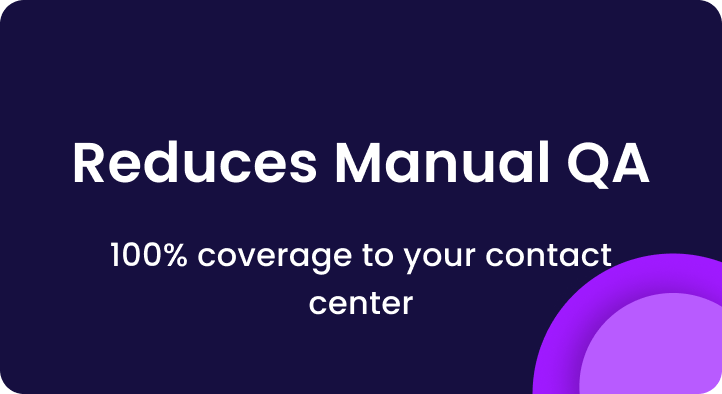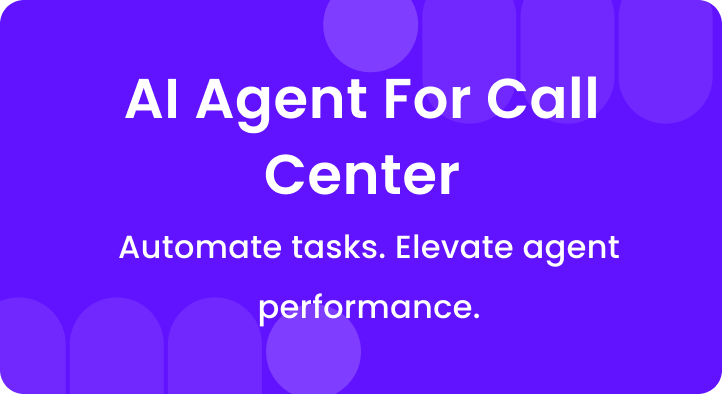Call centers handle anywhere from 100 to 1,000 calls every day.
As a result, they handle a large amount of data on customer interactions, which is incredibly difficult to access, analyze, and convert into meaningful information.
This challenge arises due to unclean or incomplete data, data spread across multiple platforms, and a lack of clarity on key metrics.
What if there was a solution that could help you understand not just the words your customers say, but the emotions behind them, the hidden patterns in their speech, and their true needs?
This isn’t science fiction; it’s the magic of speech analytics.
Speech to text analytics helps you extract useful information from recorded customer interactions so you can better understand their needs and provide quality assurance. .
Read on to learn in-depth about this avant-garde technology, how it works, its benefits – along with the best speech to text analytics software.
A. What is speech-to-text technology, and how does it work?
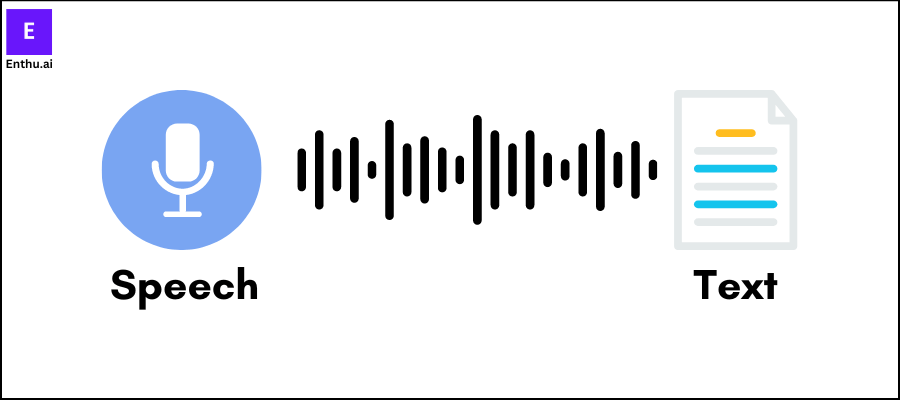
Speech-to-text analytics, also called voice analytics or speech analytics, is a technology that converts spoken words from customer interactions into text.
It’s evolved to not just transcribe conversations but also understand the meanings and emotions conveyed.
This technology is especially useful for businesses and call centers that handle large volumes of spoken information.
Speech-to-text analytics uses voice recognition, natural language processing, and AI to help organizations more effectively analyze customer needs, preferences, and behaviors.
This allows businesses to improve customer experiences by gaining valuable insights from recorded calls, both in real-time and historically.
Here’s a simple breakdown of how it works:
- Gathering audio conversations: The first step is collecting audio data, which can come from phone calls, VoIP streams, or other recording systems.
- Speech recognition: The audio data is then processed by speech recognition software, which converts the spoken words into text. This software can handle multiple languages and dialects, making it versatile for global use.
- Natural language processing (NLP): Once the speech is transcribed into text, NLP technology steps in to understand the meaning behind the words. This involves analyzing the text for emotions, keywords, phrases, and even the overall customer sentiment of the conversation.
- Analysis: The transcribed and processed text is then analyzed to extract valuable insights. This can include identifying common issues, recognizing trends, and measuring customer satisfaction. The analysis can be real-time, providing instant feedback to agents, or historical, helping to improve future interactions.
- Results: Finally, the insights gained from the analysis are used to improve business operations. For example, managers can use this information to better train agents, address recurring problems proactively, and enhance the overall customer experience.
B. Benefits of speech-to-text analytics
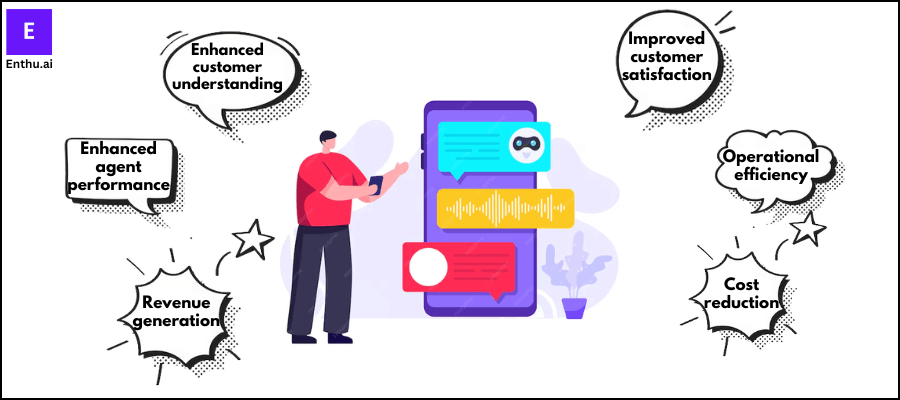
speech-to-text analytics offers several benefits that can significantly enhance customer service operations:
1. Enhanced customer understanding
- Real-time analysis: Speech analytics tools capture and analyze customer conversations as they happen. This provides immediate insights into customer needs, preferences, and behaviors.
- Behavioral insights: By analyzing customers’ actual words, tone of voice, and sentiment, businesses gain a nuanced understanding of their emotions and intentions.
- Actionable data: This real-time understanding allows businesses to respond promptly and appropriately to customer queries and issues, enhancing overall customer satisfaction.
2. Improved customer satisfaction
- Accurate sentiment analysis: Speech analytics tools analyze the tone and sentiment of customer interactions. This helps businesses gauge customer satisfaction levels accurately.
- Personalized interactions: With insights into customer preferences and past interactions, businesses can personalize their responses and offerings, making customers feel valued and understood.
- Quicker issue resolution: By identifying key customer concerns in real time, businesses can address problems swiftly, leading to higher satisfaction rates and improved loyalty.
3. Enhanced agent performance
- Performance metrics: Speech analytics tools track vital metrics such as average handling times, script adherence, and customer satisfaction scores.
- Coaching and training: AI-powered analytics provide actionable feedback to agents based on their interactions. This helps identify areas for improvement and optimize performance.
- Consistency in service: Speech analytics contribute to maintaining consistent service quality across all customer interactions by ensuring agents follow best practices and providing real-time guidance.
4. Operational efficiency
- Process optimization: Insights from speech analytics identify bottlenecks and inefficiencies in customer service processes.
- Resource allocation: Businesses can optimize staffing levels and allocate resources more effectively based on real-time demand and interaction patterns.
- Improved response times: By streamlining workflows and automating routine tasks, businesses can reduce response times and enhance overall service delivery efficiency.
5. Cost reduction
- Minimize callbacks: Speech analytics reduce the need for costly callbacks by resolving issues more effectively during the first interaction.
- Optimize channel usage: Identifying trends in customer preferences allows businesses to direct queries to more cost-effective channels, such as self-service options, reducing operational costs.
- Efficiency in operations: Streamlining processes and optimizing resource allocation leads to overall cost savings in customer service operations.
6. Compliance and risk mitigation
- Regulatory compliance: Real-time monitoring of customer interactions ensures adherence to legal and regulatory requirements.
- Risk identification: Speech analytics tools flag potential compliance issues or risks during interactions, allowing businesses to mitigate legal and reputational risks proactively.
- Data privacy: Tools like redaction features ensure sensitive information is handled appropriately, minimizing the risk of data breaches and ensuring customer privacy.
7. Revenue generation
- Identify sales opportunities: Insights from speech analytics reveal customer preferences, buying patterns, and interests, enabling targeted upselling and cross-selling opportunities.
- Optimized marketing strategies: Businesses can tailor marketing campaigns based on customer insights, maximizing the effectiveness of their outreach efforts.
- Customer retention: By better understanding customer needs, businesses can improve customer retention rates and foster long-term customer loyalty, ultimately driving revenue growth.
C. Choose the best speech-to-text analytics software – Enthu.AI
Are you searching for a speech analytics tool that offers unparalleled flexibility and powerful insights tailored for contact centers and sales teams? Look no further than Enthu.AI.
Unlike other platforms, Enthu.AI offers unmatched flexibility right from the start.
You can begin without any annual commitment, ensuring you have the freedom to scale up or down as needed without being tied down by long-term contracts.
Enthu.AI excels at simplifying the complex process of speech-to-text analytics.
It captures 100% of your voice calls and swiftly transcribes them into actionable insights.
Whether you’re focused on enhancing agent performance, identifying sales coaching opportunities, or gaining deeper customer insights, Enthu.AI empowers your team with comprehensive tools designed for contact centers and sales teams.
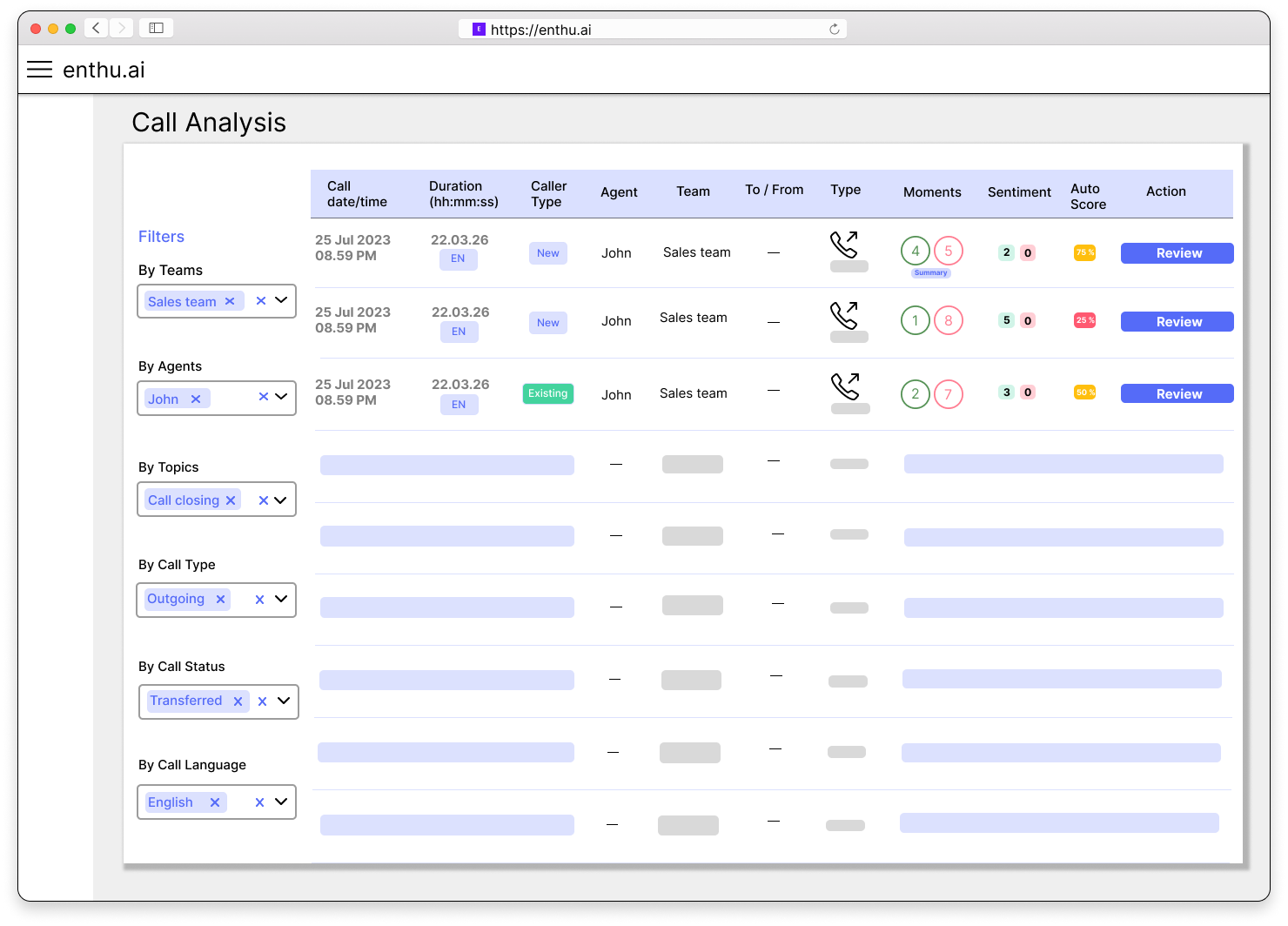
Enthu.AI is one of the most advanced speech-to-text analytics analytics tools for call centers due for several key reasons:
- Comprehensive call coverage: Enthu.AI captures and transcribes 100% of voice calls, ensuring no interaction is missed. This extensive coverage provides a detailed view of customer-agent conversations.
- Meaningful insights: It analyzes call transcriptions to extract valuable insights, such as important call moments, agent performance trends, coaching opportunities, and deeper customer insights. This helps enhance overall service quality and customer satisfaction.
- Flexibility and scalability: Unlike other platforms, Enthu.AI does not require an annual commitment or minimum agent commitment. This flexibility allows businesses to start small and scale as needed without contractual obligations, making it cost-effective and adaptable.
- Ease of use: Enthu.AI is designed for easy adoption, with unlimited onboarding support provided. It simplifies sales call monitoring, sales training and coaching processes, ensuring that teams can leverage their capabilities effectively from the start.
- Cloud-based solution: Being a cloud-based SaaS platform, Enthu.AI offers accessibility from anywhere and eliminates the need for complex infrastructure. This makes it convenient for remote teams and integrates seamlessly into existing workflows.
D. Future trends in speech-to-text analytics
In the near future, speech-to-text analytics is set to advance significantly, bringing several key trends:
1. Advanced AI and machine learning
As AI and machine learning technologies improve, speech-to-text analytics will become more powerful.
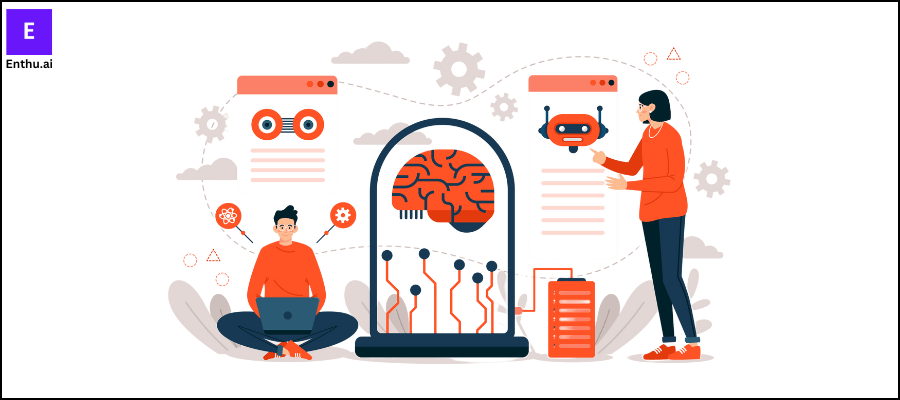
2. Omnichannel data integration
With customers interacting across multiple channels like calls, emails, chats, and social media, there’s a growing need to unify these interactions. Future speech-to-text analytics will bridge these channels, converting spoken conversations into unified text data.
This holistic view will enable businesses to understand the complete customer journey and enhance omnichannel experiences.
3. Focus on customer emotions
Beyond sentiment analysis, future analytics will explore specific customer emotions. Natural language processing (NLP) and advanced machine learning models will help recognize subtle emotional cues such as frustration, excitement, or disappointment.
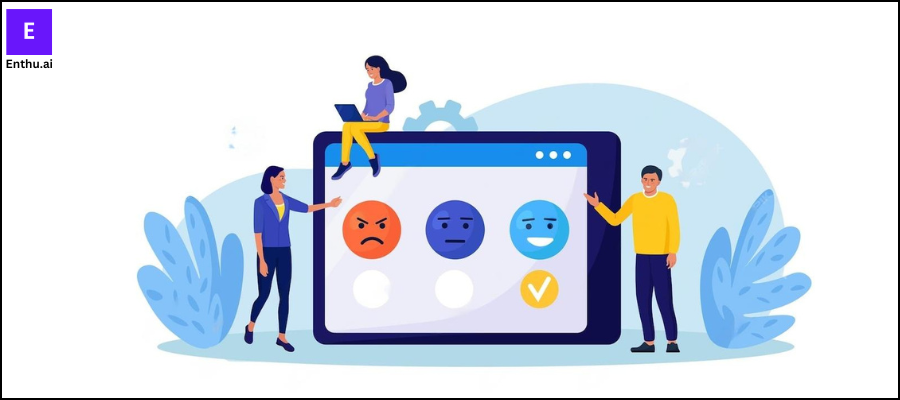
4. Ethical and responsible use
As speech analytics technology evolves, there will be a heightened focus on data privacy and ethical use.
Businesses will need to ensure compliance with data regulations and implement safeguards to protect customer information, building trust and confidence among consumers.
5. Expanded use cases
Speech recognition technology will expand beyond contact centers into marketing and product development.
Insights gleaned from customer interactions will inform product innovations and targeted marketing campaigns, aligning offerings with customer preferences and demands.
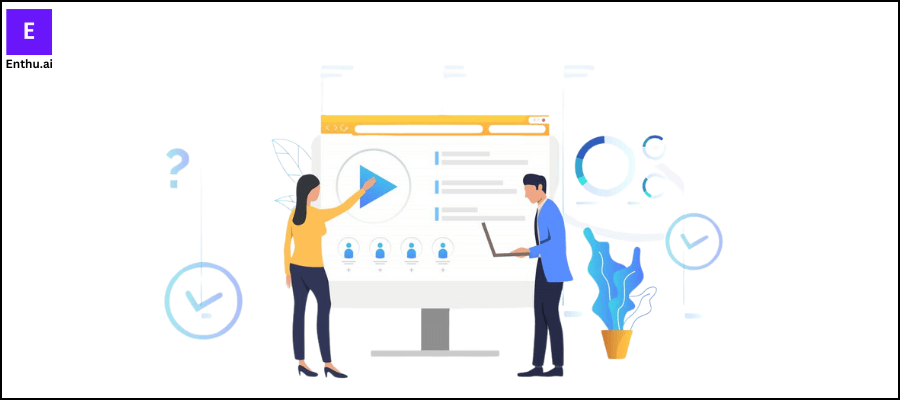
Conclusion
The global market for speech analytics reached approximately USD 1.36 billion in 2023 and is projected to grow at a CAGR of 10.2% from 2025 to 2032, reaching USD 3.24 billion by the end of the forecast period.
To stay competitive, it’s crucial to adopt speech analytics swiftly and effectively.
Enthu.AI offers a robust solution powered by advanced AI, NLP, and speech recognition technologies.
Businesses can enhance operational efficiency, service quality, and customer support by integrating speech analytics.
Choosing the right technology solution, such as Enthu.AI’s speech-to-text analysis, enables organizations to convert voice to text for easy quality assessment.
Start leveraging Enthu.AI today to gain comprehensive insights into customer behavior and elevate your overall customer experience.
FAQs
1. What is Speech-to-Text analytics?
Speech-to-text analytics converts spoken words from audio interactions into text, enabling analysis of customer conversations and insights extraction.
2. What is a speech analytics tool?
A speech analytics tool processes and analyzes spoken language data, helping organizations understand customer sentiments, behaviors, and needs from recorded interactions.
3. What is Speech-to-Text used for?
Speech-to-text technology improves customer service by analyzing and deriving insights from customer interactions, enhancing operational efficiency, and facilitating personalized customer experiences.
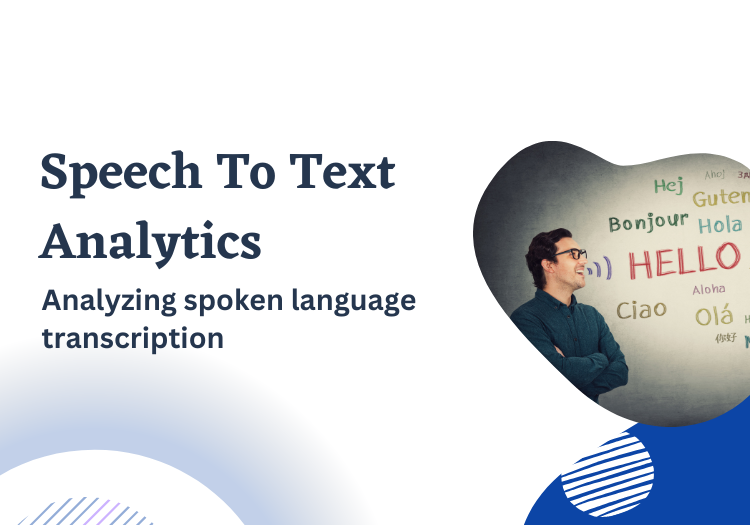
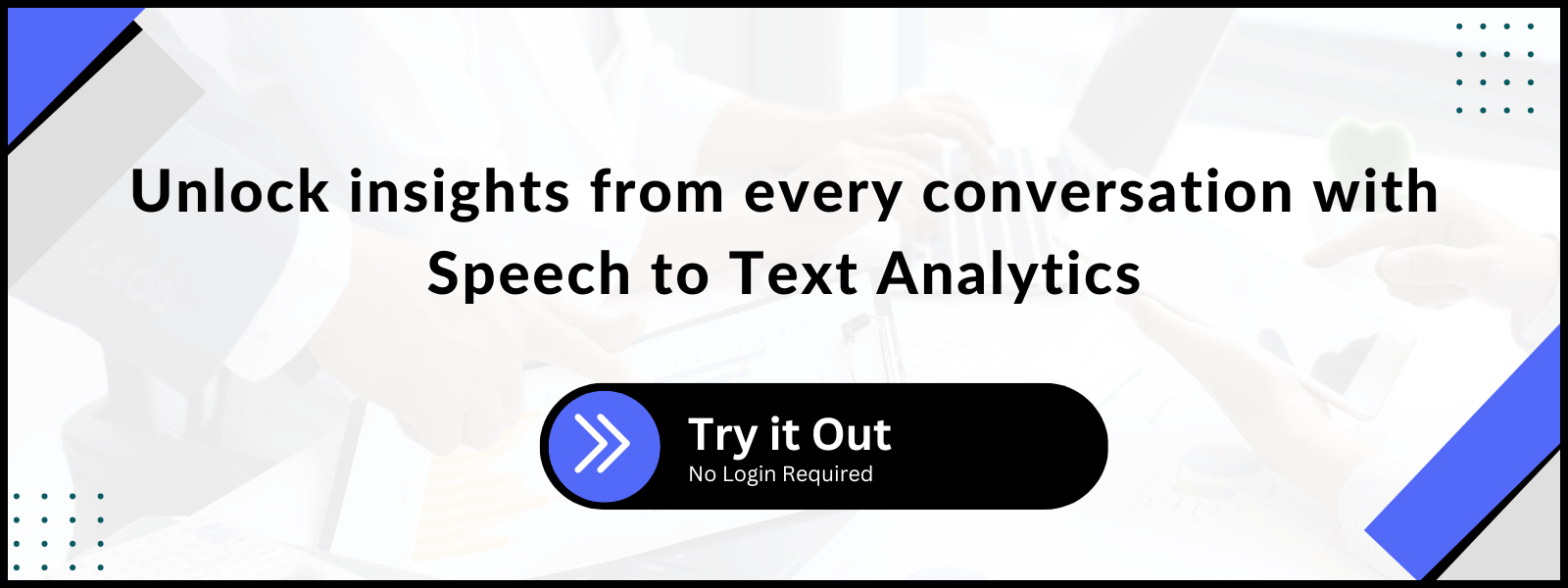


 On this page
On this page